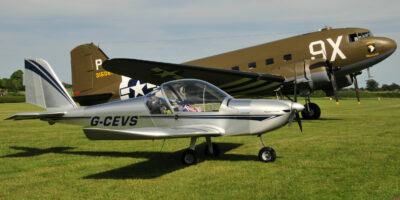Ever wondered what happens in the background if you had to make a crash landing that nobody knew about? Well today is your lucky day, as this article explores what D&D does behind the scenes regarding tracing action.
The exact same process is conducted if a pilot diverts to an aerodrome that wasn’t the intended flight planned destination or leaves a frequency without ‘signing off’. Safety status of an aircraft can never be assumed. D&D will do its due diligence.
Tracing action is the action D&D takes to track and trace the location of an aircraft where the safety status of that aircraft is unknown. Each time D&D is requested to conduct tracing action, there is a likelihood that the aircraft in question may have had an emergency and may have crashed. It is therefore our responsibility to carry out the tracing action efficiently and with urgence.
When is tracing action triggered?
The possibilities of how and when tracing action is activated are wide and varied. I’ll give you a flavour of a few of the common scenarios that would activate tracing action:
- An aircraft is overdue at the planned destination aerodrome.
- An aircraft doesn’t sign off from the ATC frequency they were working.
- Aircraft didn’t arrive for a pre-booked Practice Diversion.
- A phone call from the public referencing a ‘possible’ downed aircraft.
- Report of an ELT when Mission Control Centre (MCC) has a known callsign.
Now you are aware of the more common triggers for tracing action, I’d usually go through a list of what tools and strategies are available to D&D to help locate the aircraft. However, here is a realistic example which encompasses most of what we have available to resolve these events.
Overdue aircraft?
Saturday afternoon and Caernarfon Airport has noticed that it is still expecting another inbound before it closes the airfield, but the flight planned departure airfield is incorrect. Caernarfon Airport then called D&D to inform us that G-FIND is overdue at its airfield, but have no further details.
Being a weekend, D&D will have one controller and one support controller, we’d therefore be splitting tasks to ensure we work as efficiently and effectively as possible. The support controller goes onto G-INFO to get the details of the aircraft – where it’s registered, type and the description of the aircraft using ABPic. The support controller can see from the pictures which bases the aircraft has most recently visited to give us some guidance and awareness.
While the Support Controller is collecting that information. The D&D Controller called the CACC to see if it had any notification of activated VFR flight plans for G-FIND. It came back with a positive result that G-FIND got airborne from Bournemouth approximately four hours earlier. This pairs up with one of the pictures on G-INFO.
The Controller then called Bournemouth Airport to validate the information and get an actual airborne time for accuracy to make sure the intention of the pilot was still to arrive at Caernarfon. The Controller then calls to book a Radar Replay to track the aircraft out of Bournemouth at the time of departure. The Radar Replay usually takes 15 minutes to arrive into D&D.
The Support Controller is looking at Flight Radar 24 for any flight history of G-FIND earlier that day. This data relies on Mode S, so not all aircraft can be seen on this application. However, in this case we have a track and we can see the route was clockwise around Cardiff CTA, but disappears to the north of Cardiff.
D&D cannot use Flight Radar 24 as a single source of information and must be validated by other means. It’s a useful tool, however, it’s for awareness only.
D&D then called the Joint Rescue Coordination Centre (JRCC) to brief it of the situation and inform it of the actions we have conducted so far. This is not to scramble any SAR assets at this stage, but for situational awareness so it is not caught cold if escalation is required later.
While waiting for the Radar Replay, D&D call all possible units or agencies that may have worked the aircraft. In this example, Exeter, Cardiff and London FISO – all of which hadn’t.
We receive Radar Replay and tracked the aircraft. The aircraft disappeared from radar at around 3,000ft asml, descending for Llanbedr Airfield. Likely cause of disappearance was due to the high ground in North Wales, but we cannot make any assumptions.
We call Llanbedr who don’t answer the phone. We then try the registered pilots’ number who also doesn’t answer. We called Caernarfon to give it an update and to see if it had any useful numbers to contact Llanbedr Airfield. No joy either.
We call the JRCC and give it an update and requested if it were possible to do a fly-over using its asset based at Caernarfon, starting from the last known location on Radar, into Llanbedr Airfield.
Fortunately, as the SAR crew were getting ready to depart, FIR called D&D to inform us that they just had G-FIND on their frequency and they were safely in the air. They departed from Llanbedr transiting back down south. D&D then closed the loops with JRCC and Caernarfon and any other interested parties.
Conclusion
This example is fictitious, but based on similar previous experience, it hopefully gives you a flavour of what D&D would be doing in the background to find out the safety status of an aircraft. All situations are different and will require different responses. D&D will be using the most relevant and pertinent tools to find the safety status of the aircraft in question.
This example also highlights the requirement for pilots to let someone know of any change of plan. Even if that means transmitting on 121.5 to let D&D know your updated plan, we can pass the message onto relevant agencies on your behalf.
The same requirement is extant if you leave a frequency without ‘signing off’. It’s hugely appreciated if you let either D&D know or contact the controlling agency of that frequency. It negates the need to conduct lengthy unnecessary tracing action on safe aircraft which in turn, increases D&D’s capacity for actual emergencies.
Thank you very much. See you soon!
Other articles in this series
Distress & Diversion: Who you gonna call?
You make an SOS call… what happpens next?
Practice Pans make perfect







